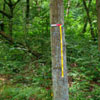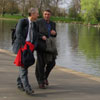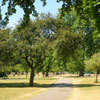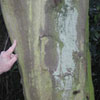Biomonitoring with Lichens
 Biology is the study of living things. Biological monitoring (biomonitoring) includes observation and assessment of biological
system change caused by anthropogenic influence.
Biology is the study of living things. Biological monitoring (biomonitoring) includes observation and assessment of biological
system change caused by anthropogenic influence.
The biomonitoring section of the Project deals with monitoring of epiphytic
lichen communities in Moscow and London influenced by air pollution.
It also looks at the sensitivity, biodiversity and distribution of lichens in Moscow and London in relation to changes in air quality. It explores the relationship between air pollution, climate and lichen communities state under past and contemporary conditions.
 The bio-monitoring protocol applied in this project is based on a surveying protocol developed by Dr. Gregory Insarov for lichens growing on trees.
The bio-monitoring protocol applied in this project is based on a surveying protocol developed by Dr. Gregory Insarov for lichens growing on trees.
Read the Lichen Biomonitoring Protocol..
The selected tree species are oak, lime and ash. Six key sites have been selected in London and Moscow.
 The sites in London are: Hyde Park, Regent's Park, Richmond Park, Oxleas Woods, Epping Forest and Ruislip Common.
The most abundant species in London woodlands on oak are mainly crustose. There are many more
species on ash, a less acidic bark, particularly in parks, recreation areas and at the roadside.
The sites in London are: Hyde Park, Regent's Park, Richmond Park, Oxleas Woods, Epping Forest and Ruislip Common.
The most abundant species in London woodlands on oak are mainly crustose. There are many more
species on ash, a less acidic bark, particularly in parks, recreation areas and at the roadside.
The sites in Moscow are: Gorky Park, Neskuchny Sad (Fun Garden), Botanical Garden of the Russian Academy of Sciences, Yasenevo Forest, Olympic Forest, Kolomenskoe Park.
 The lichens will be recorded during the summer of 2006. A list of species will be posted on the website.
The diversity in each city will be compared with historical records for each city as well as between cities.
The lichens will be recorded during the summer of 2006. A list of species will be posted on the website.
The diversity in each city will be compared with historical records for each city as well as between cities.
Comparison will be made using both literature and project data. It is anticipated that the surveys will be
repeated at three yearly intervals.

